The day started without any urgency. Yesterday had been a long day and included a fair amount of walking. A sleep-in was in order and, in our minds, quite justified.
Wendy plotted a course of action for the day that had us revisiting the rail network with a couple of recently purchased 48-hour rail tickets. A short, one-stop journey on the Marunouchi line (colour-coded red on the Subway Route maps and stations) had us connecting with the (grey) Hibaya line at Ginza Station. Two stops further on this line had us within easy walking distance of the wholesale fish markets at Tsukiji. We climbed a flight of stairs from the underground rail system and emerged onto bustling streets and into the midst of a tourist meeting point.
Rickshaws were lined up, with their operators touting for business. International tourists emerged from the underground station not quite sure which way to turn and were seized upon by the rickshaw operators with the promise of a guided journey through the old town streets. We had a sense of which way to head though; this was confirmed by the weight of numbers headed in the same direction.
We were soon being drawn along with the masses through the narrow streets of the Outer Market, which were lined with stalls. There was seemingly little order in these market stalls, with tiny cafés and bars operating alongside fresh fish retailers. Fruit and veggies were being sold alongside kitchenware, tourist trinkets were being sold everywhere. Small speciality stalls prepared tasty treats, each doing just one or two things well.
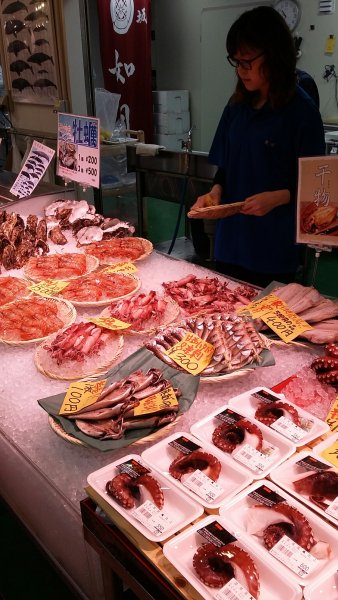
One assumes that the longer the queue is outside such specialty outlets is a measure of how good their offerings are. We stopped and watched one such stall where two young men were operating a hive of activity. One was cooking a form of sweet treat similar to a moon cake in a a series of waffle iron-like implements being rotated over a hot fire. The “waffle iron” was unevenly divided into six segments, each of a different shape. Into each segment went a small scoop of batter, followed by a piped portion of red bean paste, which was then covered with another small scoop of batter. The waffle iron was then closed, placed over the fire, and turned once during the cooking process; the contents were then tipped out onto a wicker plate and packaged, ready for sale. For the ones we purchased (500 yen for half a dozen), it was only a matter of seconds between being removed from the waffle iron and being handed to us. Eating one was a bit like biting into a meat pie that has been reheated in a microwave – near nuclear on the inside. The sweet treats were, however, very more-ish and devoured quickly.
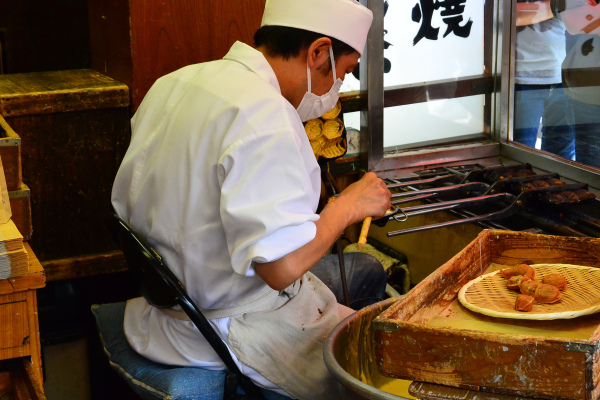
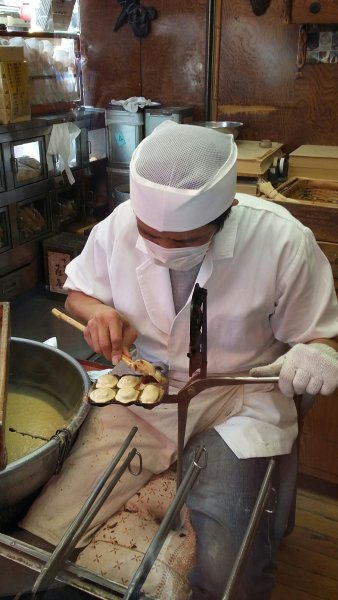
We continued to be drawn, along with the masses, towards the Wholesale Fish market where much of the seafood consumed in Tokyo is auctioned off daily to retailers, cafés and restaurants. The public aren’t allowed in while the auctions are underway, but after 10:00am it is possible to walk the flooded paths between the produce which is packed in polystyrene boxes filled with crushed ice. Gumboots are the footwear of preference for the market workforce; heavy, waterproof aprons adorn many of those involved in the movement of seafood through the market.
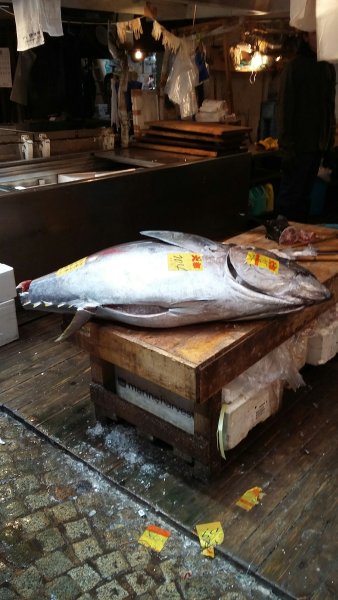
The choice of seafood throughout the market is enormous, with many shellfish not seen in the waters around Australia. Most notable were huge pale oysters – the biggest oysters we had ever seen. Another standout were mussels that looked just like the ones farmed in Port Phillip Bay – only many times bigger. The meat inside these muscles would be the equal of your typical porterhouse steak or chicken breast fillet!
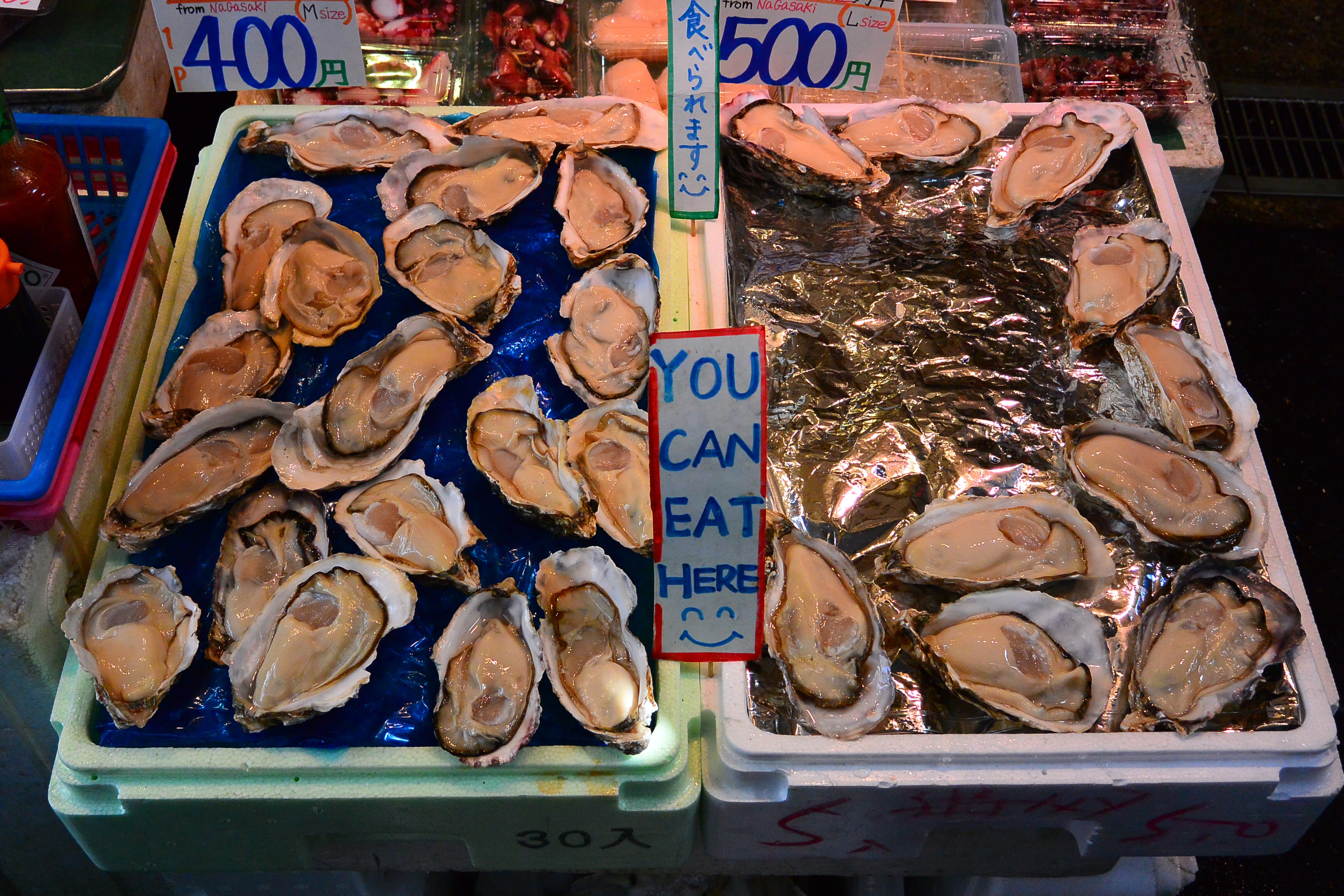

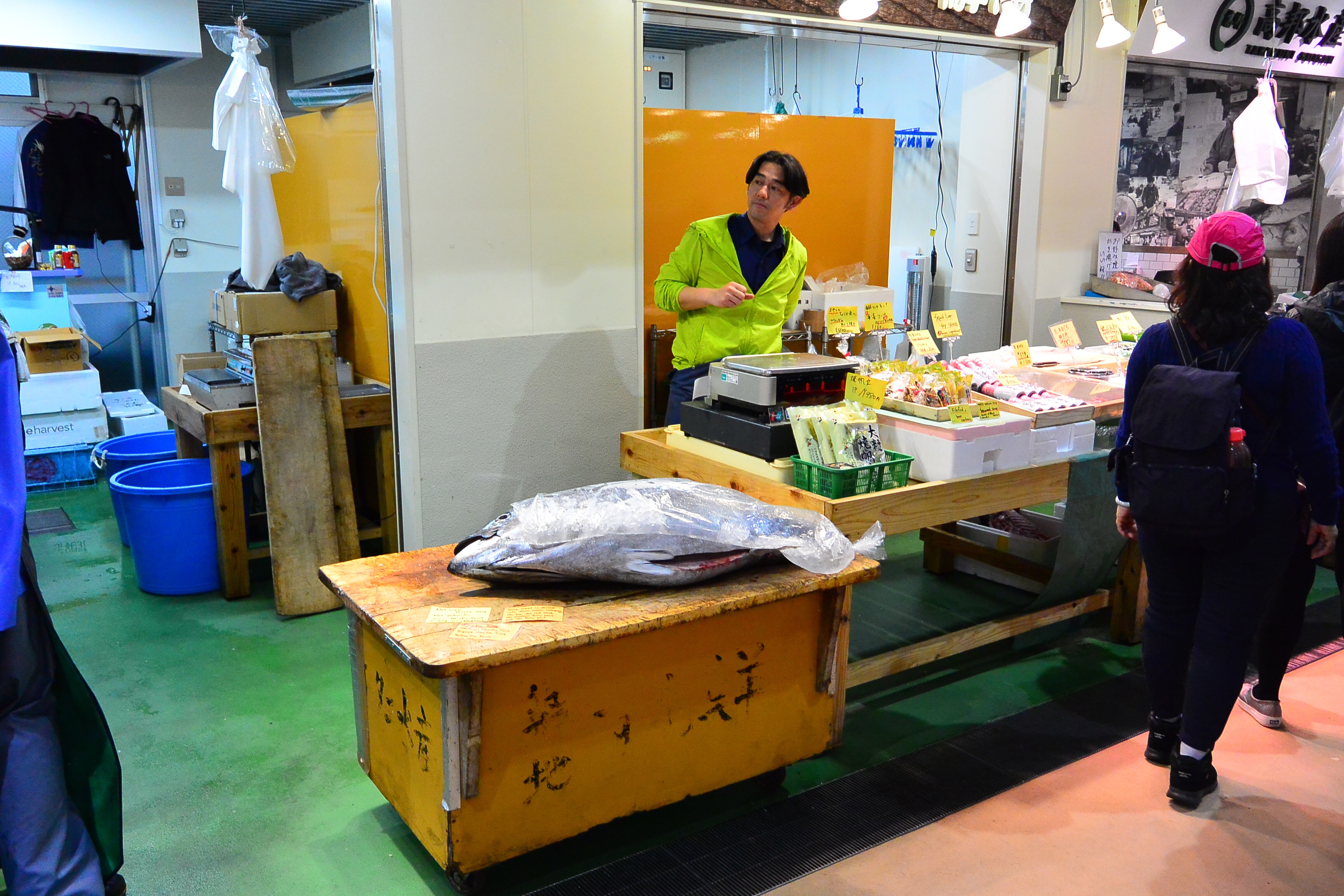
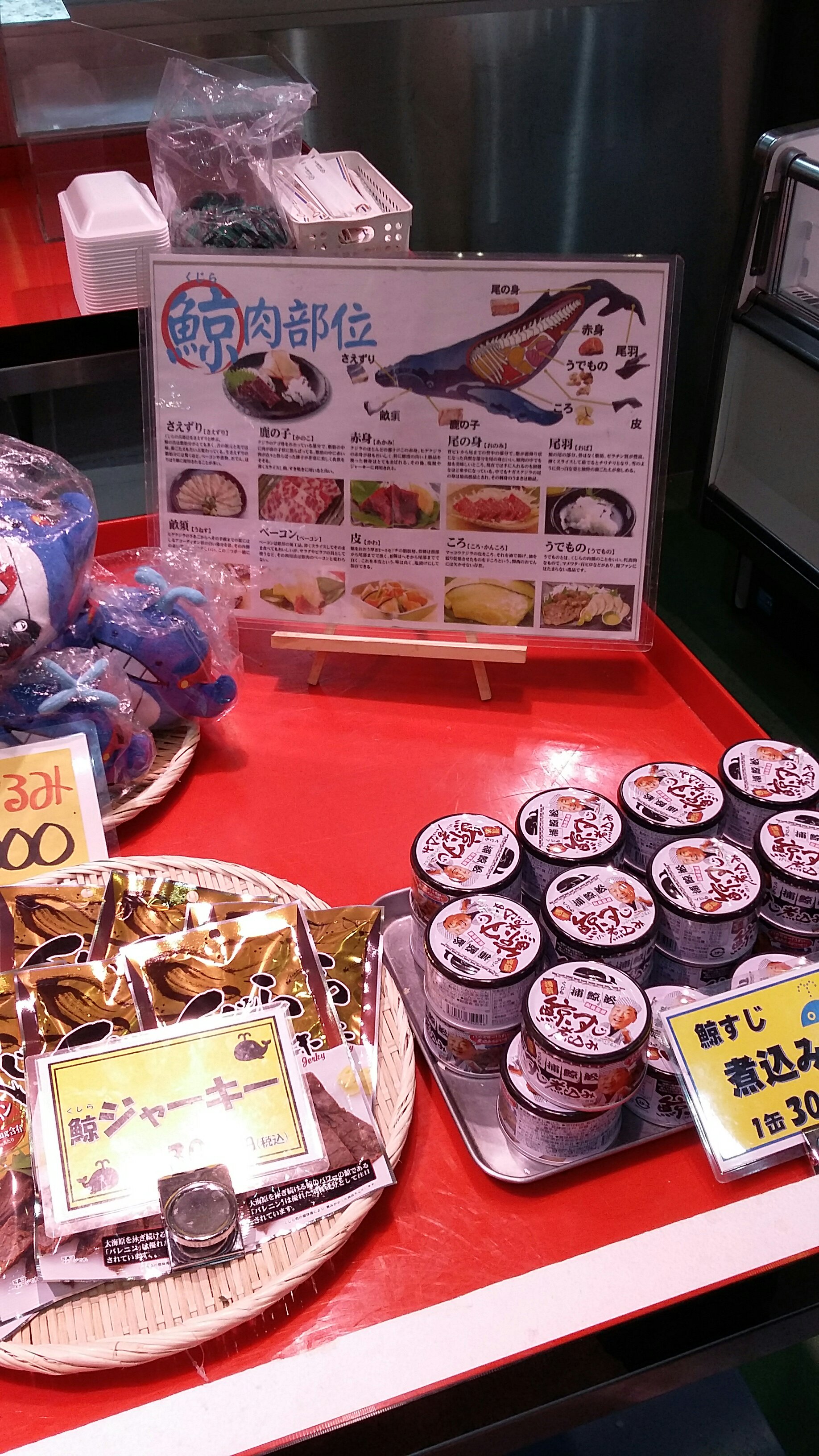
We stopped and watched while a large tuna was unpacked from a timber, coffin-like box (the size of a real coffin). It had been packed in crushed ice that had compressed and was proving difficult to remove. A spade was used to chip away at the ice and reveal the enormous tuna beneath. Photos were prohibited in the Wholesale Market, though we noticed the fishmongers exchanging angry gestures with non-compliant tourists on occasions.
We returned to the subway and caught the train to Asakusa Station; Sensori-Ji Temple and Asakusa-jinja Shrine were next on the agenda. We again followed the gathering crowds through narrow streets decorated with imitation cherry blossom and the occasional real cherry blossom tree. We did note the number of people getting about in traditional dress, both men and women and wondered if it was a sign of respect as we drew closer to the temple.
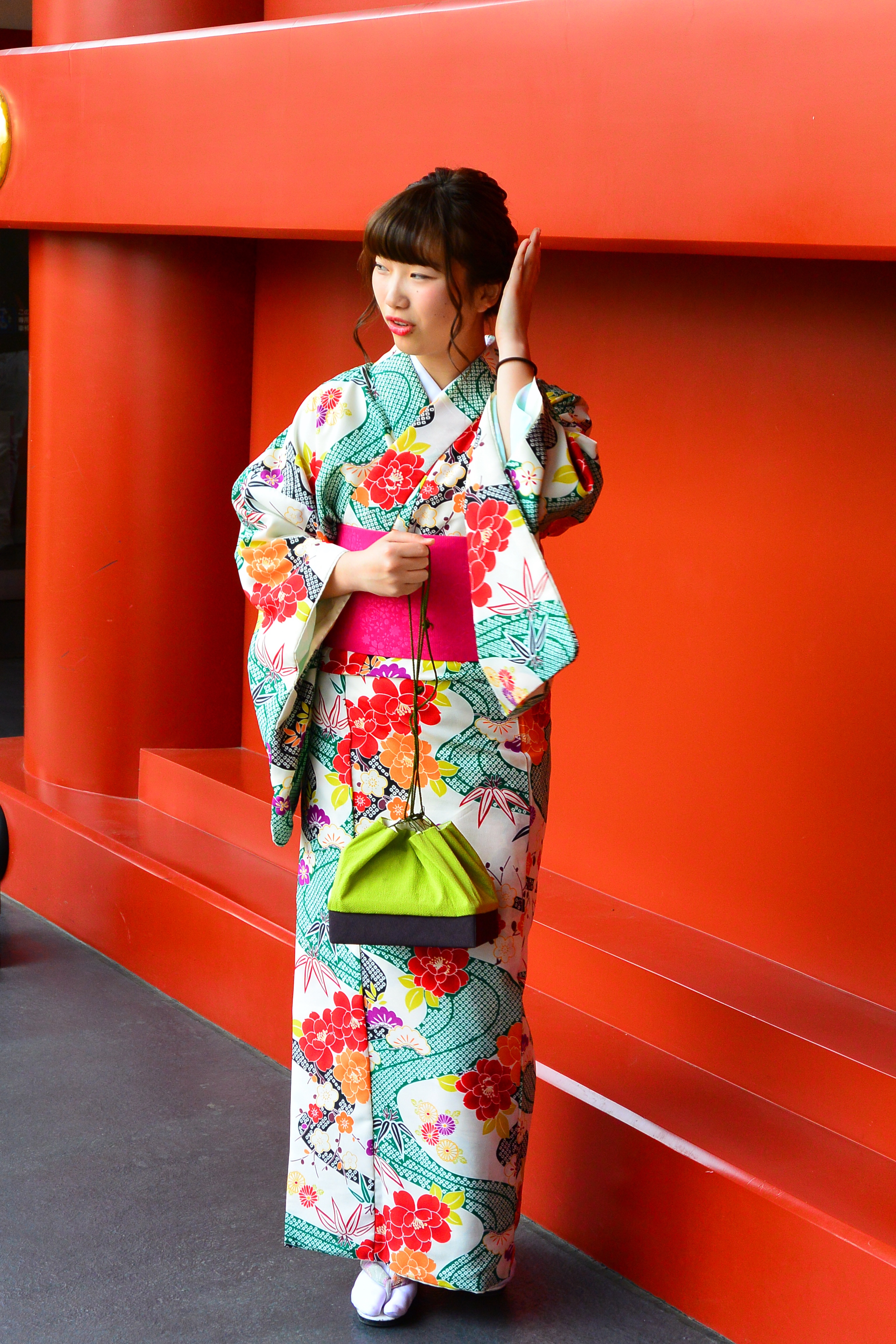
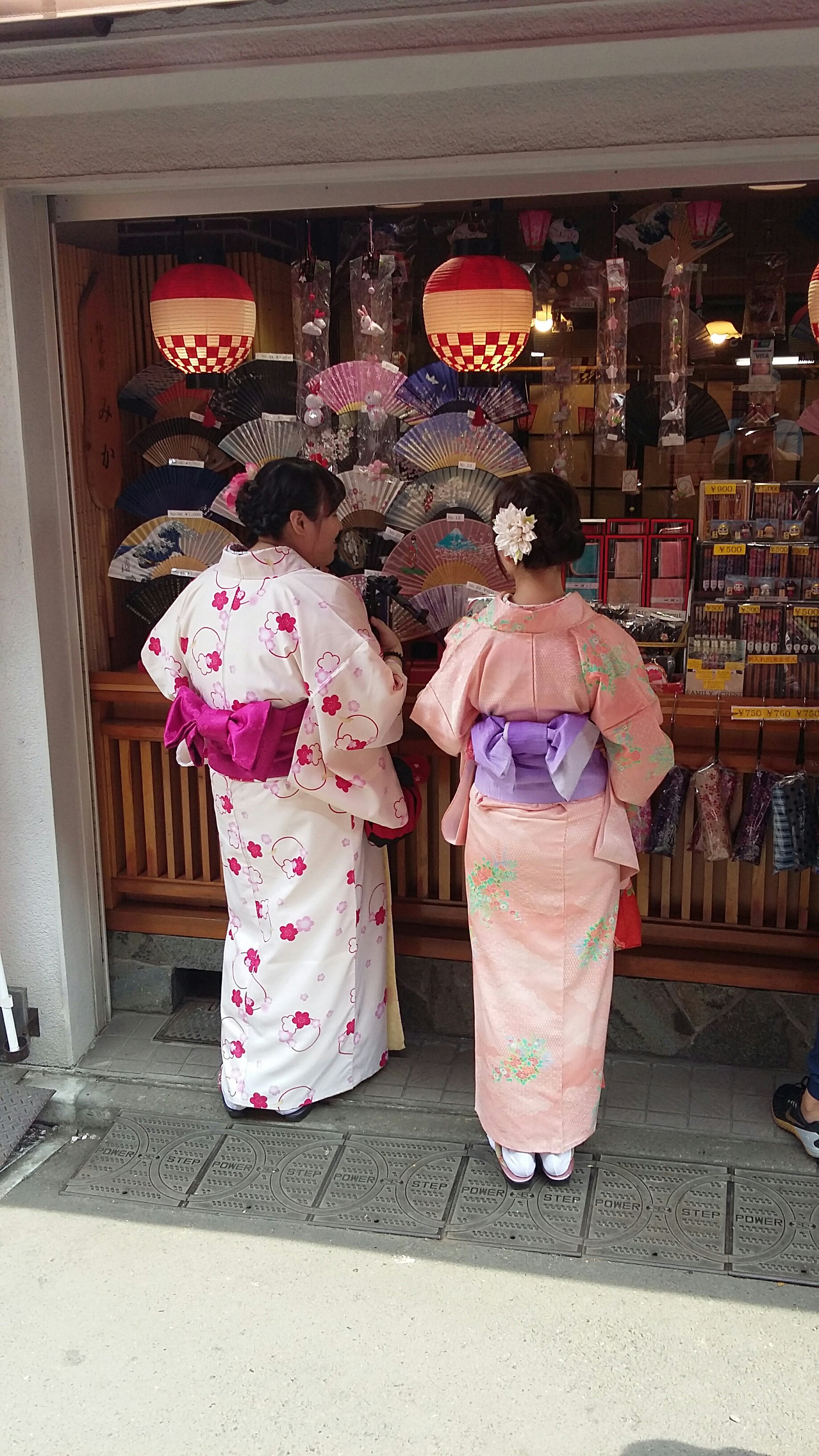
Buddhist temples, like many other buildings of worship, are typically quiet places for reflection and contemplation. Nothing could be more different at this temple when we arrived, with the surging sightseers pressing forward to get closer to the inner sanctum inside the main temple building.
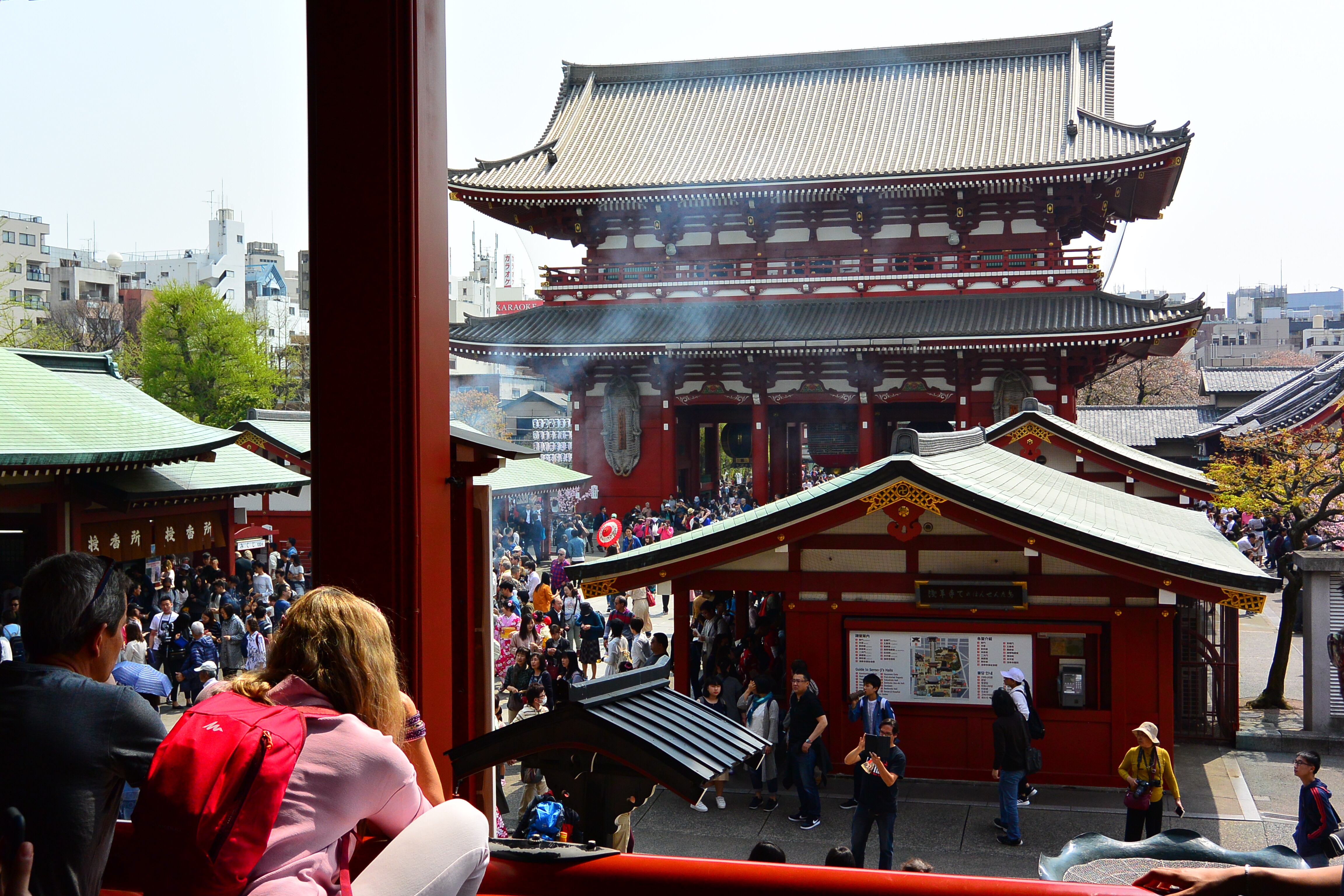
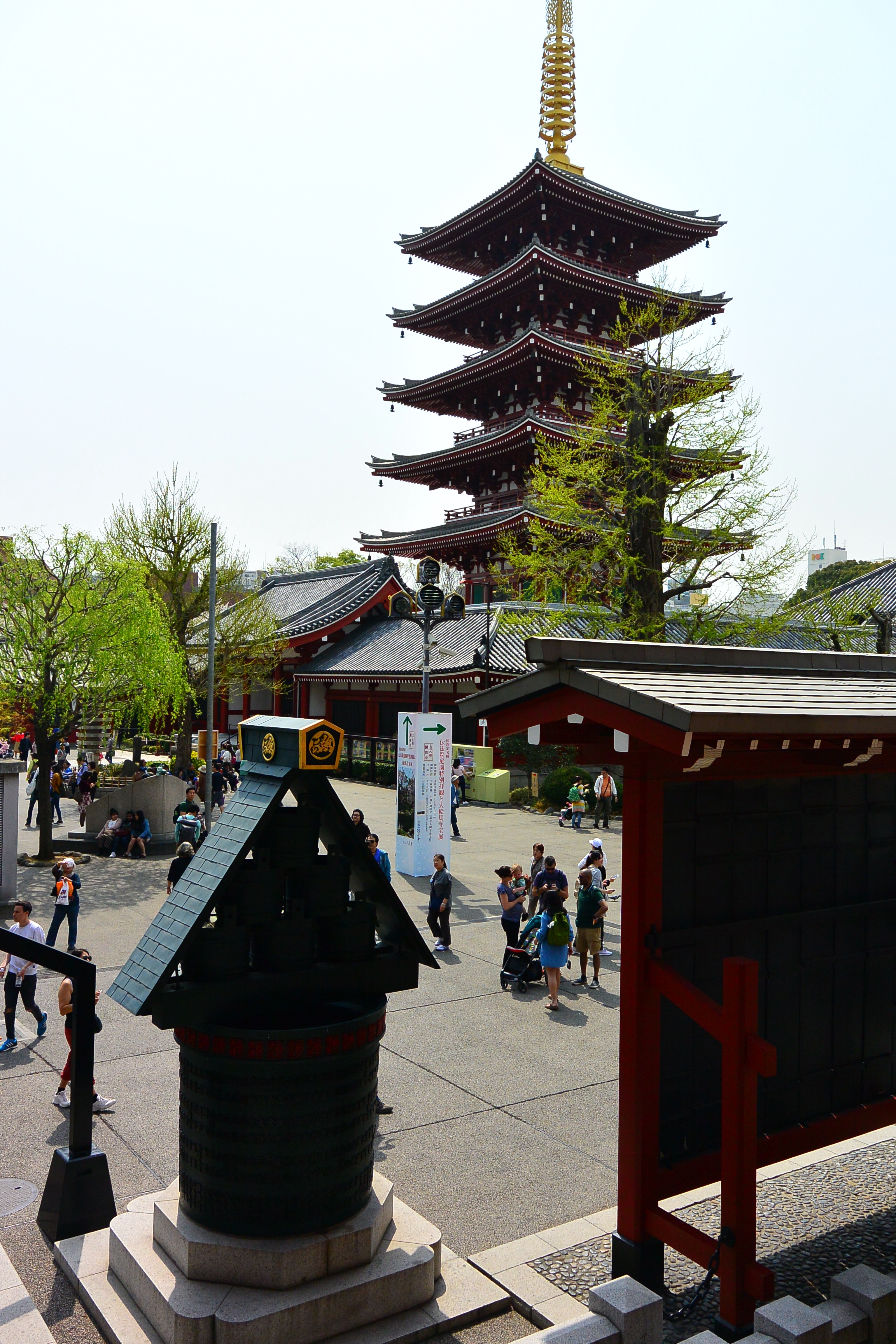
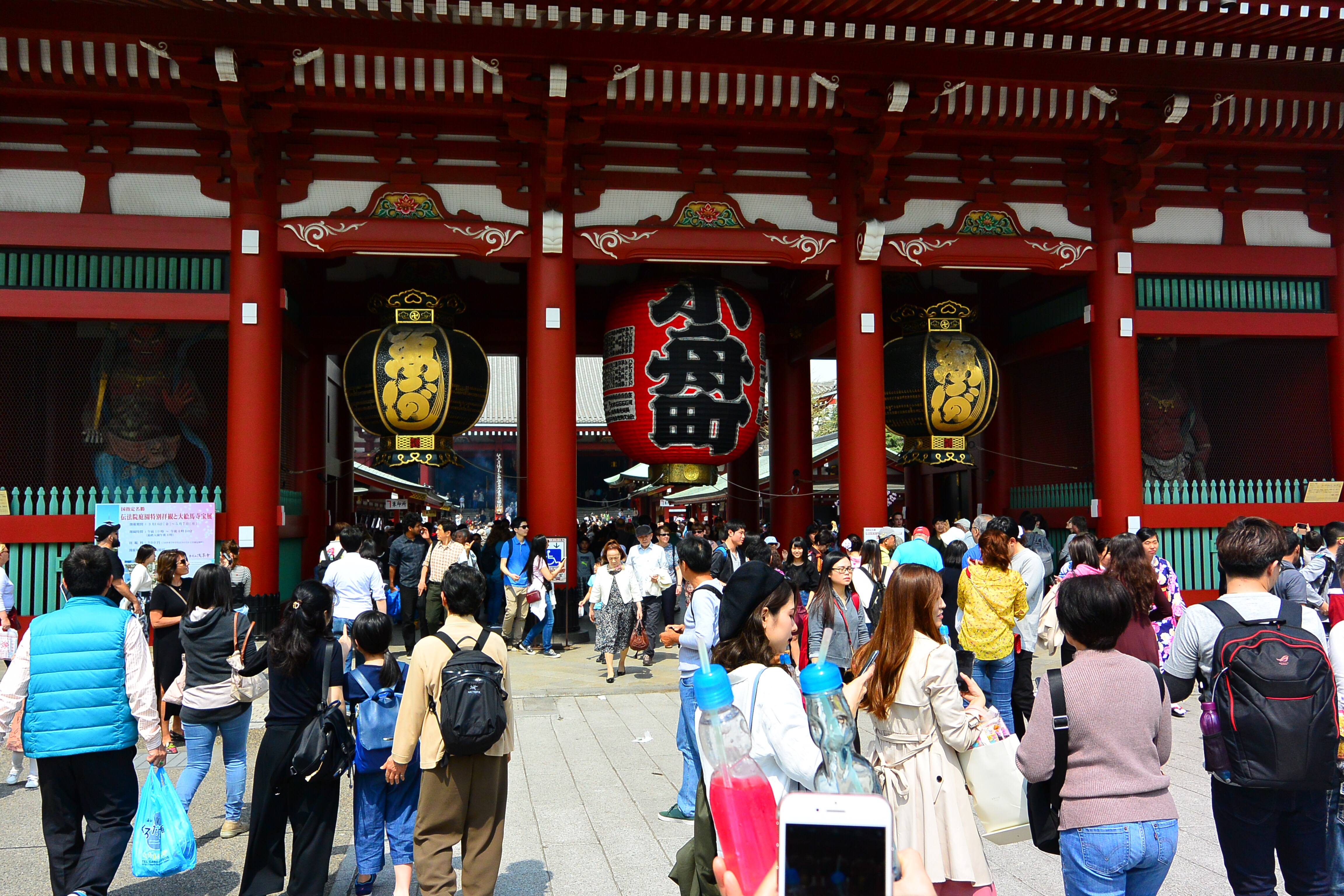

On leaving the temple grounds, we went in search of a restaurant for lunch and found ourselves at Daikokuya Tempura. There was no queue, but on entry we were asked if tatami seating was OK as the European-style table seating downstairs was full. We removed our shoes and, on handing them over, were given a token to be used to claim them back when leaving. We then ascended a steep, winding staircase which was not far off being classified as a ladder and which led to a narrow room laid out with tatami mats, low tables and cushions on the floor.
A lunchtime set menu was ordered – plenty of tempura prawns and veggies, rice, a tasty entree dumpling and pickles, all helped down with a smokey flavoured clear broth. Green tea finished off the substantial spread.

Our walk through the streets continued after lunch, as we went in search of a shopping precinct that specialised in cooking wares and, in particular, Japanese knives. In Kappabashi Kitchenware Town, narrow streets and laneways crossed major roads with an assortment of small shops and restaurants until we found one shop that had nothing but knives of all shapes and sizes on display. There was a knife for every conceivable purpose – paring, slicing, boning, sushi, noodles; through to weapon-like implements and others seemingly large enough to be used to chop wood.
Other shops specialising in different aspects of kitchenware proved to be very interesting to browse through, with collections of pots, pans, woks, ironware, charcoal grills, etc. There were graters of all shapes and sizes for ginger, wasabi and daikon. The list goes on and on. More knives were scrutinised; Chris seems to be shortlisting to a layered steel chef’s knife with full tang set in a rosewood handle. Prices seem to vary from around AUD$120 to AUD$350 – although at this stage in the process the differences aren’t apparent to us.

We returned to the Ginza line on the underground rail system and disembarked at Ueno Station, aiming for Ueno Park which is always popular with the locals but particularly so during spring when it hosts Tokyo’s largest cherry-blossom party. A lengthy climb to the top of a wide staircase brought us to an area obviously popular with picnickers. Groups of people had staked out their area with a ground sheet; squares of cardboard were used to sit on. Cardboard boxes served as tables to support great spreads of food, beer and saké. Some were being used to play card games, others as a place for children to colour in and amuse themselves. Shoes were apparently not permitted on the ground sheets; neat rows of them would line the boundary between the land claim and public parkland.
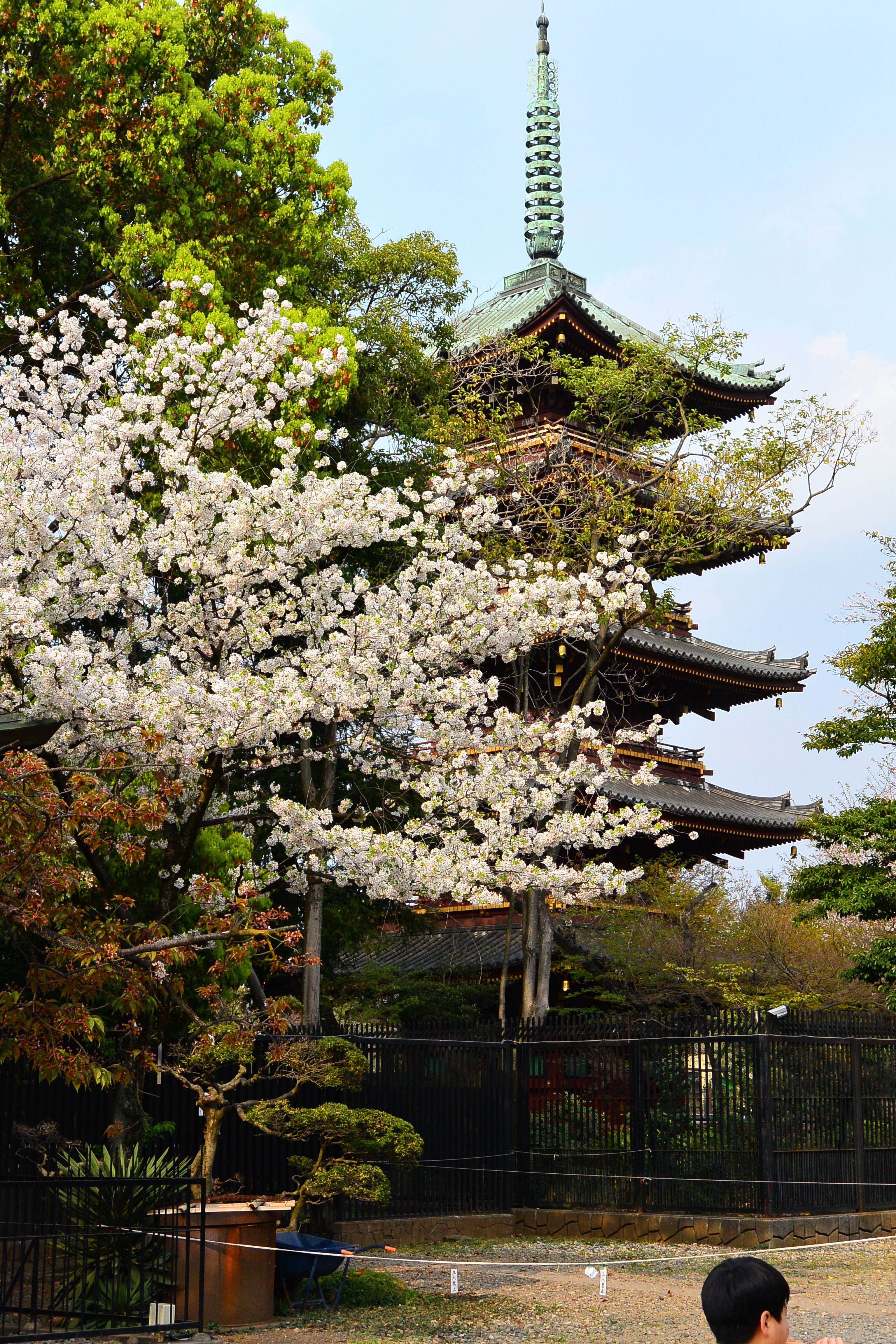
[wpvideo NIHXiLr1]
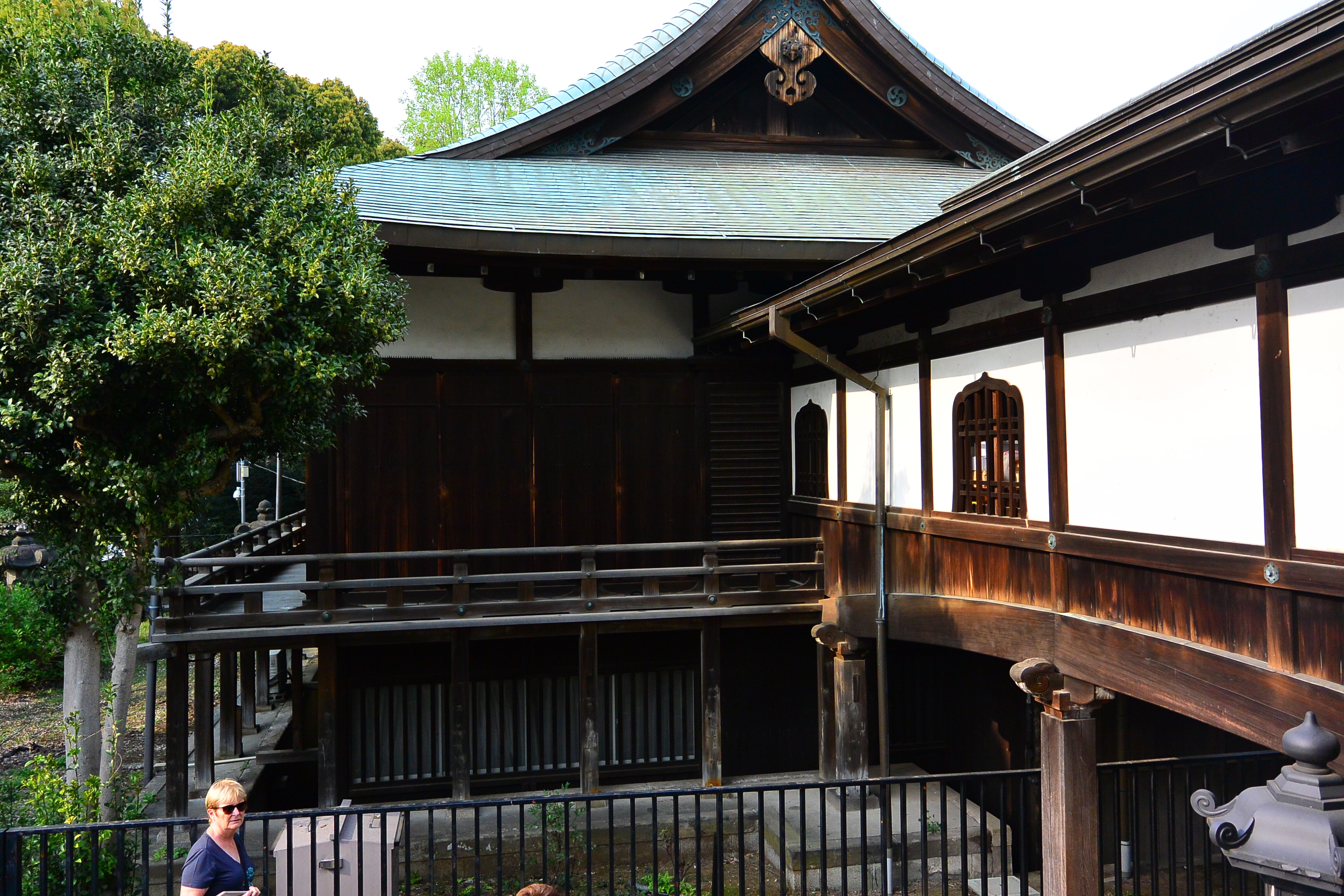
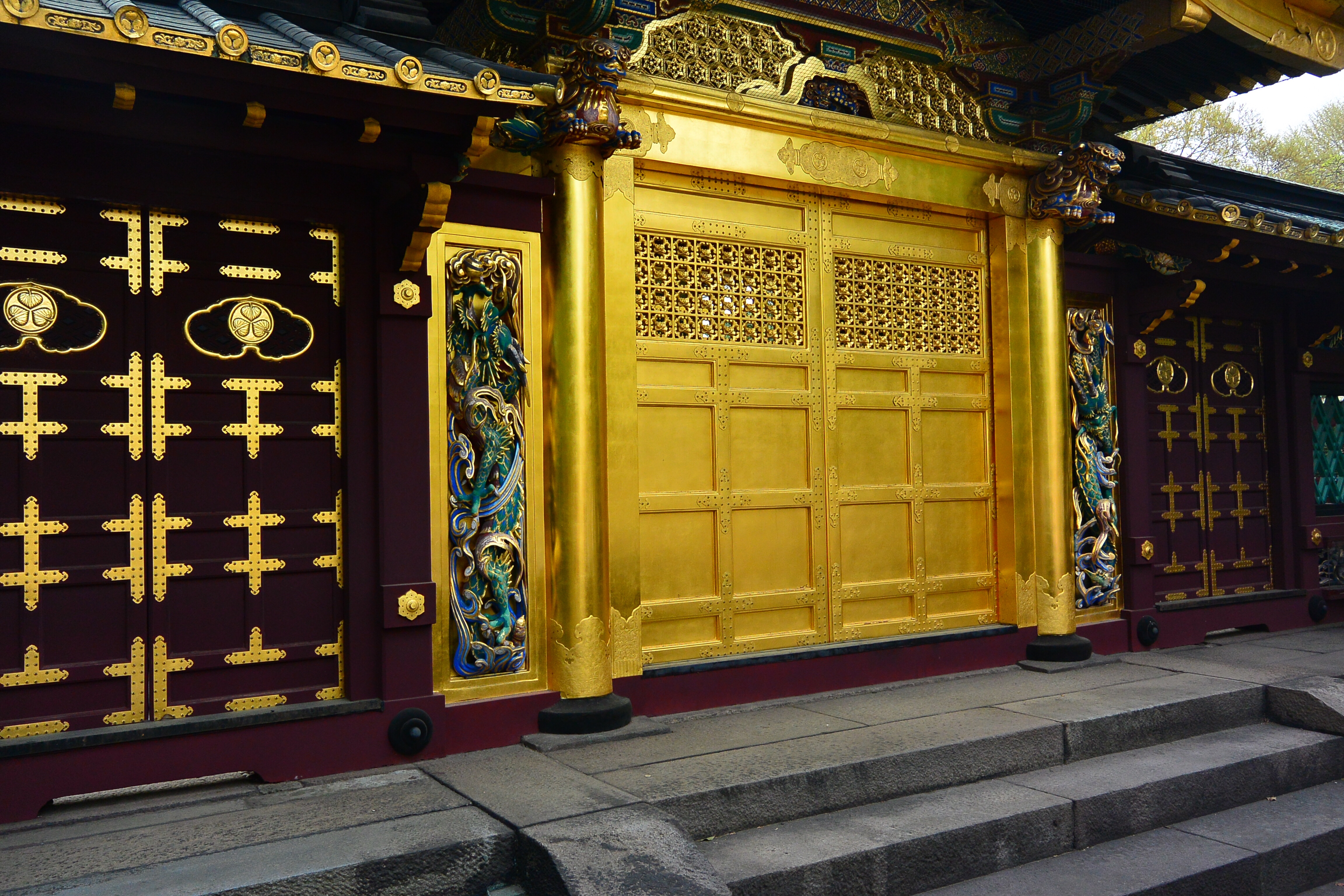
The park contained a number of temples and shrines tucked away in the established gardens. The major drawcard for the visitors was the cherry blossom that was drawing to an end. One suspects that one windy day will bring an end to the season for another year.
We caught the train back to Ginza, an upmarket retail precinct, and wandered the shops. A simple dinner of assorted sushi was purchased in the sprawling food court beneath the Mitsukoshi department store; neither of us was particularly hungry after our tempura “banquet” for lunch. We passed a Nissan dealership with a futuristic sports car on display, titled “The car of 2020”.
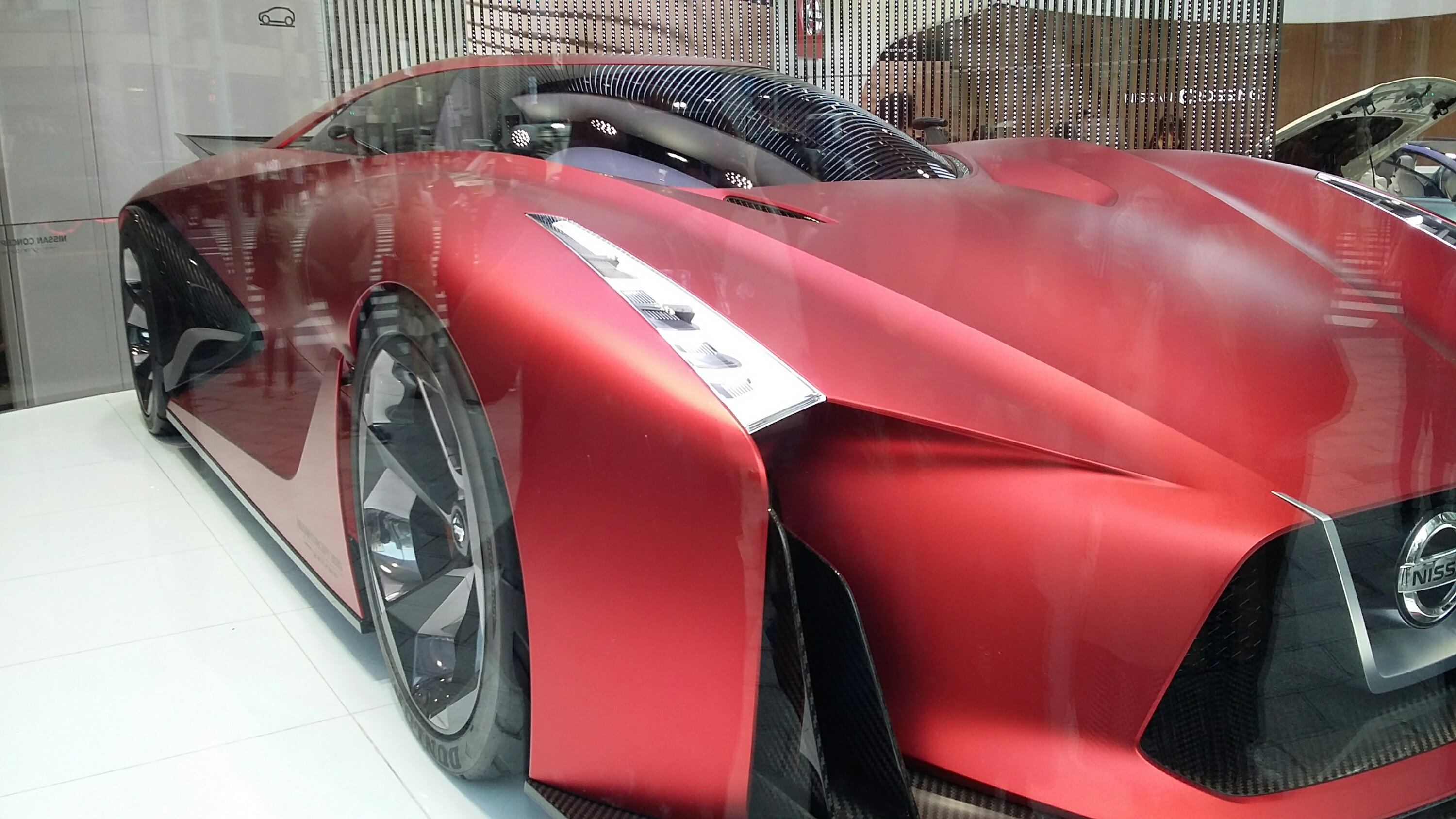
As the light faded and the workers began leaving work for the day we returned on foot to our hotel. Shop lights and advertising signs took over from the diminishing daylight. Businessmen in dark suits and white shirts moved in groups towards bars or the underground. We briefly got lost, then found our way again to the now familiar sight of Tokyo Central railway station and our hotel.
